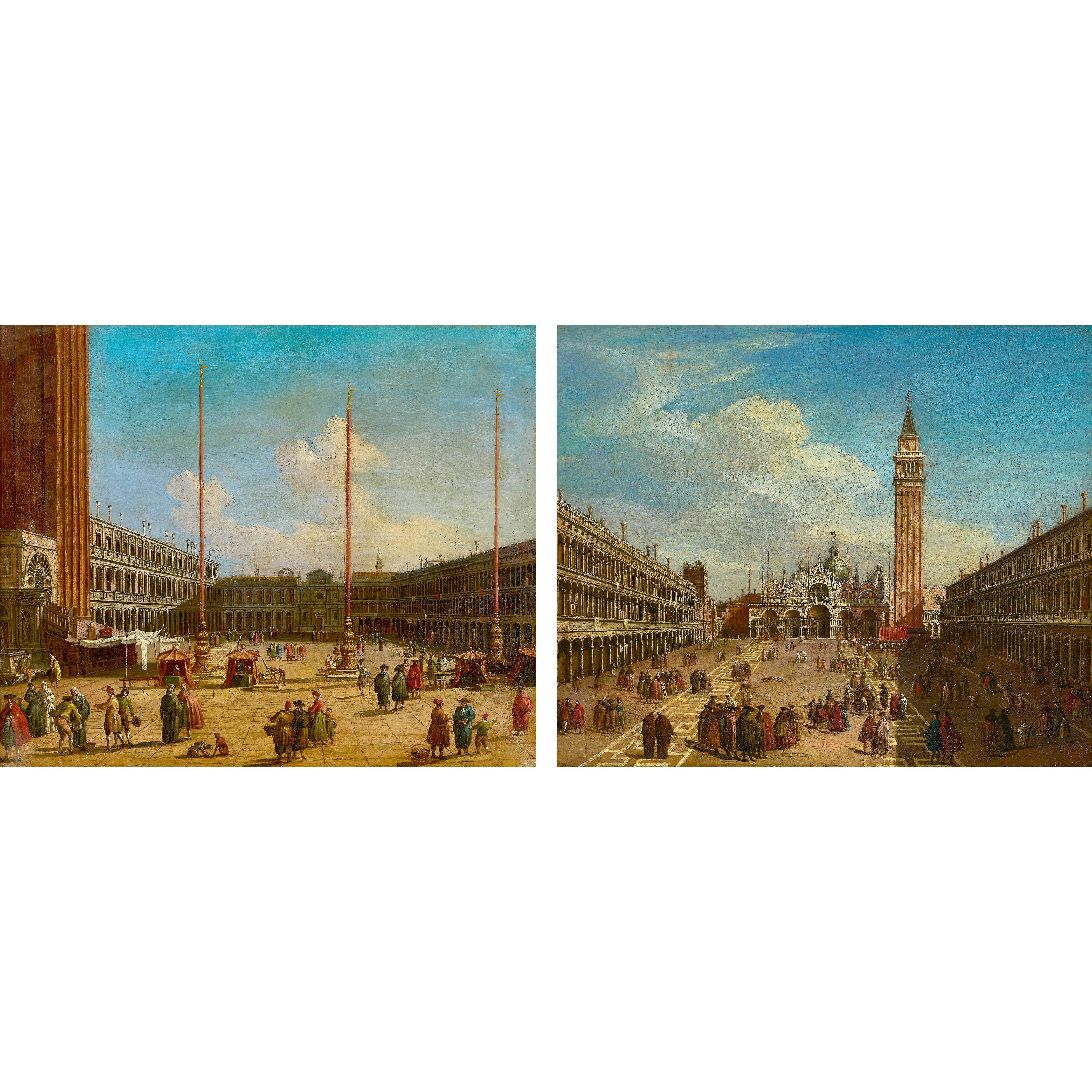Piazza San Marco con la Basilica di fronte. / Piazza San Marco con San Geminiano. Gegenstücke.
Je Öl auf Leinwand, doubliert,
je 42x51 cm
(Bitte scrollen Sie nach unten für die deutsche Version.)
Provenance: Private property, Switzerland.
Expertise: Dr Federica Spadotto, Padua, 3.11.2024.
The British painter William James is known for his depictions of Egyptian temples as well as views of London and Venice. Only a few details about his life are documented. It is confirmed that he worked in London, where he was appreciated as an artist, and his artworks were exhibited at the Royal Academy from 1769 to 1771. His views of London were inspired by Samuel Scott. Edward Edwards wrote in “Anecdotes of Painters” that James was an assistant or pupil of Canaletto (Giovanni Antonio Canal) in 1746 and 1751. It appears that James adopted Canaletto’s loose brushwork and the depiction of subtle light effects on water surfaces. Although numerous views of Venice by his hand have been preserved, it is doubted that William James ever visited the lagoon city.
The offered pair of paintings shows Venice’s landmarks from two opposing perspectives. One directs the viewer’s eye to the southwest side of St. Mark’s Square with the Church of San Geminiano, which stood between 1558 and 1807 at the site of today’s Ala Napoleonica. Its counterpart depicts the northeastern view of the square, focusing on St. Mark’s Basilica and the accompanying Campanile.

Provenienz: Privatbesitz, Schweiz.
Expertise: Dr. Federica Spadotto, Padua, 3. November 2024.
Der britische Maler William James ist bekannt für seine Darstellungen von ägyptischen Tempeln sowie Ansichten Londons und Venedigs. Gesichert sind nur wenige Angaben zu seinem Leben. Belegt ist seine Tätigkeit in London, wo er als Künstler geschätzt und seine Arbeit 1769-1771 an der Royal Academy präsentiert wurde. Seine Londoner Stadtdarstellungen sind von Samuel Scott inspiriert. Edward Edwards beschrieb in ®Anecdotes of Painters¯, dass James 1746 und 1751 Assistent oder Schüler von Canaletto (eig. Giovanni Antonio Canal) war. Von ihm scheint der Engländer die lockere Pinselführung und die Wiedergabe subtiler Lichtspiele auf Wasseroberflächen übernommen zu haben. Obwohl zahlreiche Ansichten von Venedig aus seiner Hand überliefert sind, wird bezweifelt, dass William James jemals in der Lagunenstadt war.
Das angebotene Gemäldepaar zeigt Venedigs Wahrzeichen aus zwei entgegengesetzten Blickrichtungen. Einmal wird das Auge auf die Südwestseite des Markusplatzes mit der Kirche San Geminiano gelenkt, die sich zwischen 1558 und 1807 an der Stelle der heutigen Ala Napoleonica befand. Das Pendant zeigt die nordöstliche Ansicht des Platzes mit Hauptaugenmerk auf dem Markusdom und dem dazugehörigen Campanile.

